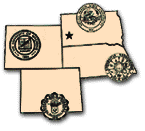Animal Science, Department of

Range Beef Cow Symposium
Date of this Version
December 1995
Document Type
Article
Abstract
Cull cows are often overlooked as an important source of income to the cow-calf enterprise. Depending upon the relationships between cull cow and calf prices, and the herd culling rate, cull cow receipts generally account for 15-30 percent of income from the cow-calf enterprise. However, some producers give little attention to this source of income and ways of enhancing it. For many producers, cull cows are sold at the time culling takes place, and much of this culling is done in the late fall soon after calves are weaned. Is it most profitable to sell cows when they are culled, or should they be fed for a period of time? Several factors need to be considered to properly answer that question and that is the purpose of this paper and presentation.
Cows are culled from a herd for a number of reasons and the reason for culling will most likely affect the time culling takes place and could alter the most profitable marketing strategy. Reproductive failure, problems resulting from old age, and unsatisfactory performance are the most common reasons for culling an animal. While reproductive failure is generally diagnosed in the fall of the year, culling for other reasons could take place at other times.
Three factors of importance regarding the decision to sell cows when culled versus feeding them and selling at a latter time are: (1) the seasonality of cull cow prices, (2) the price difference between cull cow slaughter grades and the percentage of cull cows in each grade, and (3) the cost of feeding cull cows. Each of these factors will be discussed in some detail.


Comments
Published for Proceedings, The Range Beef Cow Symposium XIV December 5, 6 and 7, 1995, Gering, Nebraska.